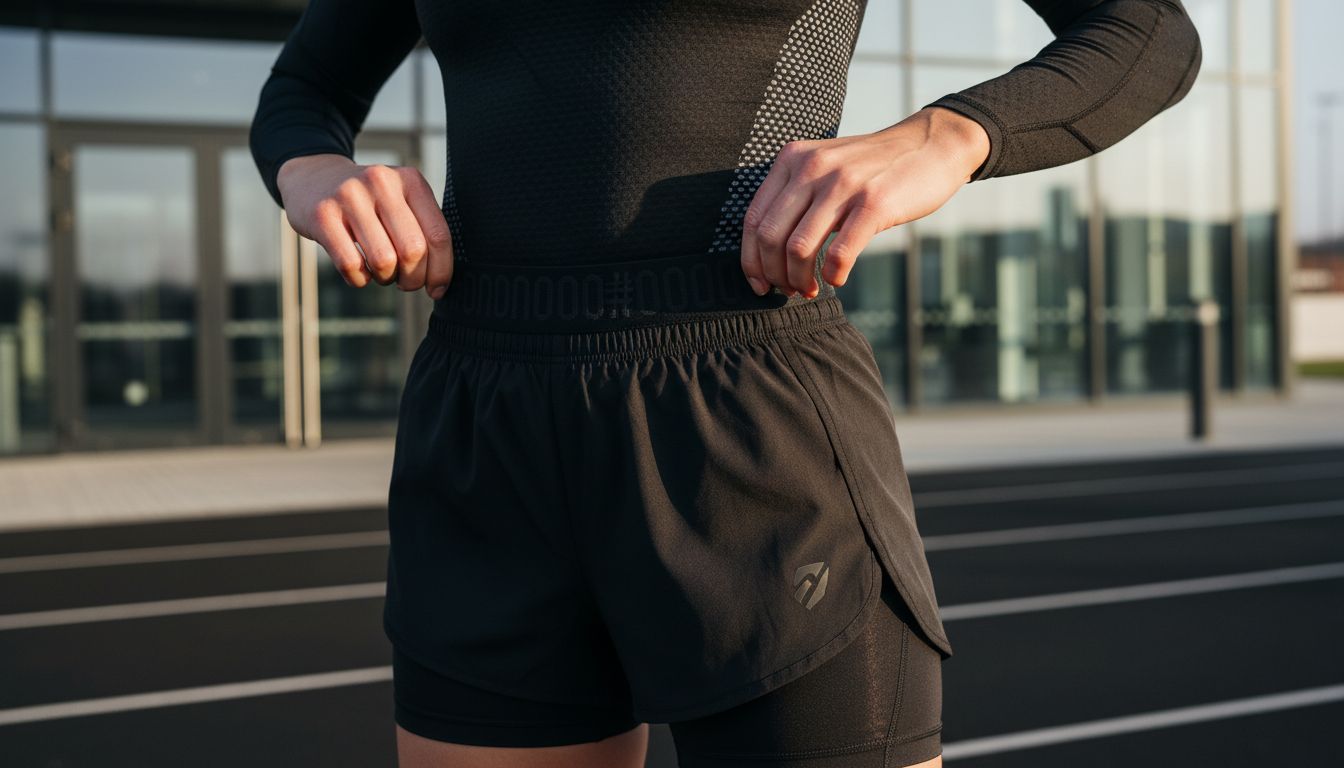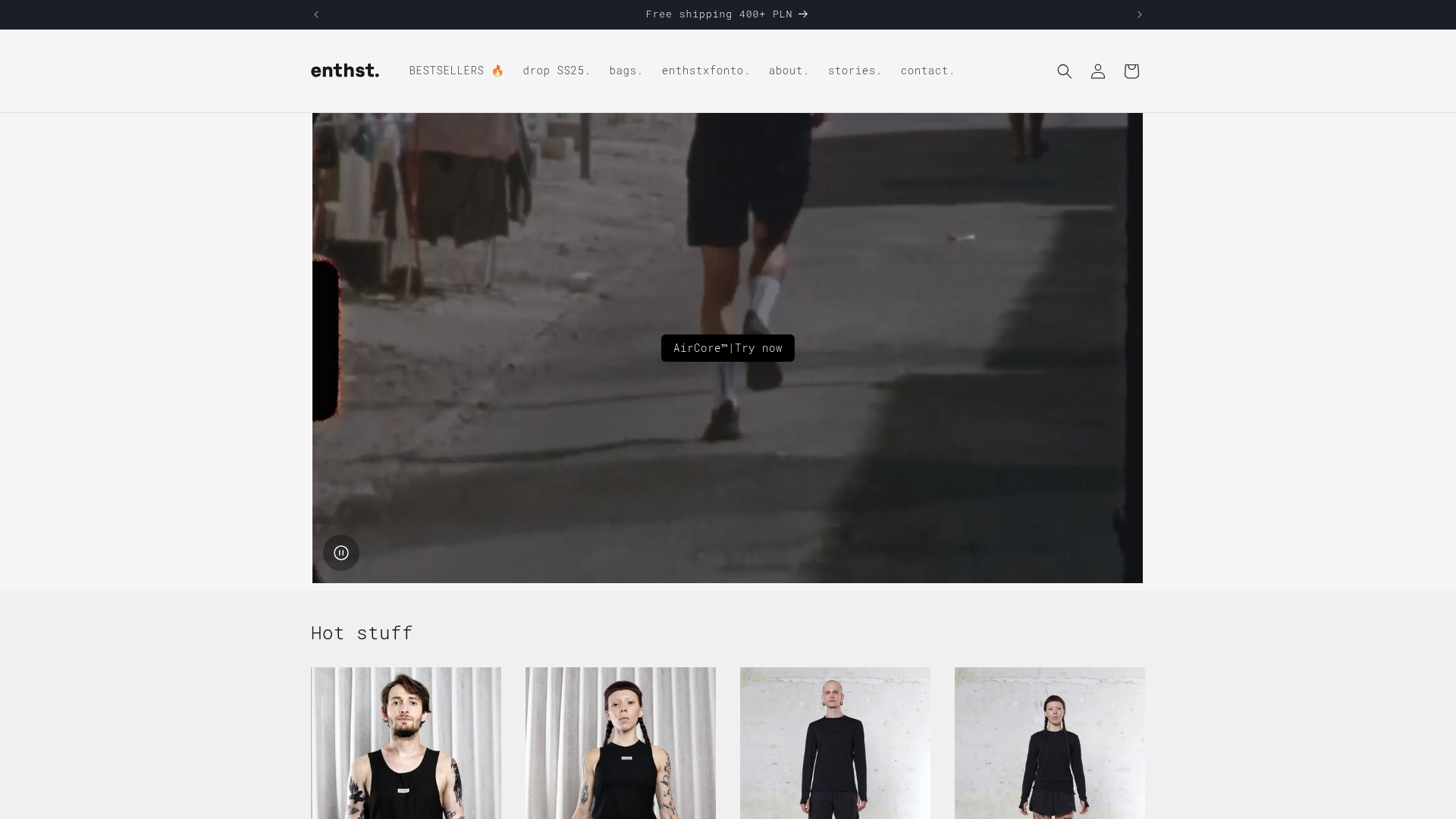
Marathon-Ready Gear: Complete Guide for Runners
Share
More than 50,000 runners finish the New York City Marathon each year, yet comfort and endurance often hinge on one factor: specialized marathon gear. Choosing the right apparel does not just feel good, it can shape your success or struggle throughout all 26.2 miles. Smart gear choices optimize body temperature, reduce fatigue, and help runners focus on their goals instead of their discomfort, turning every race into a chance for stronger, safer performance.
Table of Contents
- Defining Marathon-Ready Gear And Its Purpose
- Key Types Of Apparel And Accessories Explained
- Technical Materials And Innovative Features Overview
- Testing, Fit, And Community-Driven Validation
- Common Mistakes In Selecting Marathon Gear
Key Takeaways
| Point | Details |
|---|---|
| Importance of Marathon Gear | Specialized marathon gear enhances performance, manages sweat, and supports muscle function during long-distance races. |
| Key Apparel Components | Essential running apparel includes moisture-wicking base layers, compression fits, and specialized lower body gear to prevent discomfort. |
| Innovative Materials | Advanced textiles improve breathability and flexibility, maximizing comfort and efficiency for runners. |
| Common Selection Mistakes | Avoid choosing untested gear or non-moisture-wicking fabrics on race day to enhance performance and reduce injury risk. |
Defining Marathon-Ready Gear and Its Purpose
Marathon-ready gear represents a sophisticated ecosystem of specialized apparel and accessories designed to transform challenging 26.2-mile races from potential ordeals into achievable athletic achievements. According to Polar Research, these gear components are meticulously engineered to address the complex physiological demands runners encounter during long-distance events.
The core purpose of marathon gear goes beyond simple clothing - it’s about creating a performance-enhancing environment for your body. Performance optimization becomes critical through strategic design elements like:
- Moisture-wicking fabrics that manage sweat and regulate body temperature
- Compression elements that support muscle groups and reduce fatigue
- Weather-adaptive materials protecting against environmental variations
- Lightweight construction minimizing unnecessary energy expenditure
According to Brooks Running, essential marathon gear isn’t just about comfort - it’s a critical investment in your athletic potential. Well-fitted running shoes, breathable clothing, and smart accessories like hydration systems transform your running experience from survival to strategic performance. The right gear doesn’t just accompany you through 26.2 miles - it actively supports your journey toward achieving your marathon goals.
Key Types of Apparel and Accessories Explained
Marathon apparel and accessories represent a strategic arsenal designed to support runners through grueling long-distance challenges. According to Polar Research, these gear components are carefully crafted to address specific physiological needs during extended running events.
Base Layers form the foundation of marathon performance gear. These include:
- Moisture-wicking tops that pull sweat away from the body
- Seamless tanks and t-shirts preventing skin irritation
- Compression shirts supporting muscle groups and improving blood circulation
The next critical category involves Lower Body Apparel. Gymshark highlights the importance of specialized shorts designed with advanced features. These typically include 2-in-1 designs with fitted underlayers to prevent chafing and provide muscle support.
Accessories complete the marathon gear ecosystem. Smart runners invest in critical add-ons like:
- Hydration packs for consistent fluid intake
- Energy gel holders for convenient nutrition management
- Lightweight running hats protecting from sun exposure
- Performance sunglasses reducing glare and eye strain
These meticulously designed pieces transform running from a physical challenge into a carefully managed athletic performance.

Here’s a comparison of the most common marathon apparel and accessory categories:
| Category | Key Features | Primary Purpose |
|---|---|---|
| Base Layers | Moisture-wicking Seamless design Compression |
Manage sweat Reduce irritation Support muscles |
| Lower Body Apparel | 2-in-1 shorts Fitted underlayers |
Prevent chafing Muscle support |
| Hydration Accessories | Hydration packs Energy gel holders |
Maintain fluid intake Easy nutrition access |
| Protective Accessories | Lightweight hats Sunglasses |
Sun protection Reduce glare |
Technical Materials and Innovative Features Overview
Marathon performance gear has dramatically evolved beyond traditional clothing, becoming a sophisticated intersection of textile engineering and athletic science. Nike’s marathon technology exemplifies this transformation, utilizing advanced materials specifically designed to enhance runner performance and comfort.
Fabric Innovation stands at the forefront of marathon gear development. Key technological features include:
- Moisture-management textiles that rapidly wick sweat
- Lightweight, flexible fibers enabling unrestricted movement
- Strategic ventilation zones for temperature regulation
- Compression zones supporting muscle groups
Adidas marathon gear research reveals another dimension of technical innovation. Their approach integrates cutting-edge materials like Climalite fabric for superior sweat management and Continental™ Rubber outsoles providing exceptional traction. These technological integrations transform running apparel from simple clothing to high-performance equipment.
The ultimate goal of these technical materials is creating a symbiotic relationship between runner and gear. Innovative features like breathable mesh panels, four-way stretch fabrics, and temperature-adaptive technologies work collectively to minimize physical resistance and maximize athletic potential. By reducing friction, managing body temperature, and supporting muscle groups, modern marathon gear acts as a second skin - responsive, protective, and performance-enhancing.
Testing, Fit, and Community-Driven Validation
Marathon gear development has transformed from traditional design approaches to a collaborative, data-driven process that prioritizes runner experience and performance. FUSH˚ exemplifies this modern approach by directly engaging running communities in the product refinement process, ensuring that gear meets real-world athletic demands.
Performance Validation involves multiple critical stages:
- Direct collaboration with running clubs and professional athletes
- Comprehensive field testing under diverse environmental conditions
- Iterative design modifications based on user feedback
- Biomechanical analysis of gear’s impact on runner performance
According to Nike’s technology research, advanced engineering now integrates sophisticated data collection techniques. Their Dri-FIT ADV technology, for instance, emerges from extensive research tracking real runners’ physiological responses, enabling precise design of ventilation zones and moisture management systems.
The ultimate goal of this community-driven approach is creating marathon gear that feels like a natural extension of the runner’s body. By prioritizing direct athlete input, brands transform technical clothing from generic products into personalized performance tools. This collaborative methodology ensures that every stitch, fabric choice, and design element is purposefully crafted to support runners through their most challenging athletic endeavors.
Common Mistakes in Selecting Marathon Gear
Marathon gear selection can be a minefield of potential performance-crushing errors that many runners unknowingly make. According to Polar Research, these mistakes can dramatically impact your race day experience and overall performance.
The most critical errors runners consistently make include:
- Wearing brand new, untested gear on race day
- Selecting non-moisture-wicking fabrics that trap sweat
- Ignoring specific weather condition requirements
- Choosing clothing that doesn’t provide proper temperature regulation
Gymshark’s marathon clothing guide highlights the significant risks of inappropriate clothing choices. Runners frequently underestimate the impact of ill-fitting gear, which can lead to severe chafing, reduced mobility, and unnecessary energy expenditure. Fabric selection becomes crucial - heavy materials in warm weather or thin layers in cold conditions can transform a potential personal best into a challenging survival scenario.
The golden rule of marathon gear is simple: never experiment on race day. Every piece of clothing should be thoroughly tested during training runs, ensuring comfort, fit, and performance under various conditions. By avoiding these common pitfalls, runners can transform their gear from a potential performance barrier into a strategic athletic advantage.
Equip Yourself for Marathon Success with Enthst’s Innovative Gear
Running a marathon means facing tough challenges like preventing chafing, managing sweat, and staying comfortable mile after mile. This guide highlights the importance of choosing marathon-ready gear crafted with moisture-wicking fabrics, compression support, and weather-adaptive features. If you want to avoid common mistakes like wearing new or unsuitable apparel on race day, you need gear designed with your exact needs in mind.
At Enthst, we understand these challenges firsthand. We blend cutting-edge technical solutions with streetwear style and have built community-driven designs tested by runners of all levels. Explore our collection S25 | Enthst.com to discover thoughtfully engineered apparel and accessories that go beyond the standard.

Experience the difference that marathon-specific materials and tested designs make in your performance. Take the leap today and gear up for your best race at Enthst.com. Your marathon journey deserves apparel that supports every step so why wait Let’s make your next run your strongest yet.
Frequently Asked Questions
What is marathon-ready gear?
Marathon-ready gear refers to specialized apparel and accessories designed to enhance performance and comfort during long-distance races, specifically the 26.2-mile marathon. This gear includes moisture-wicking fabrics, compression elements, and weather-adaptive materials.
Why is choosing the right fabric important for marathon running?
Choosing the right fabric is essential because it can significantly affect your comfort and performance. Moisture-wicking fabrics help manage sweat, while appropriate materials regulate body temperature, reduce chafing, and support muscle groups during a run.
What are the key components of marathon clothing?
Key components of marathon clothing include base layers, lower body apparel, and accessories. Base layers are moisture-wicking tops and compression shirts, while lower body apparel includes specialized shorts. Accessories can consist of hydration packs, energy gel holders, and protective items like hats and sunglasses.
What common mistakes should runners avoid when selecting gear for a marathon?
Runners should avoid wearing new gear on race day, choosing non-moisture-wicking fabrics, ignoring weather conditions, and selecting ill-fitting clothing. Proper testing and familiarization with gear during training runs is crucial to avoid discomfort or performance issues on race day.